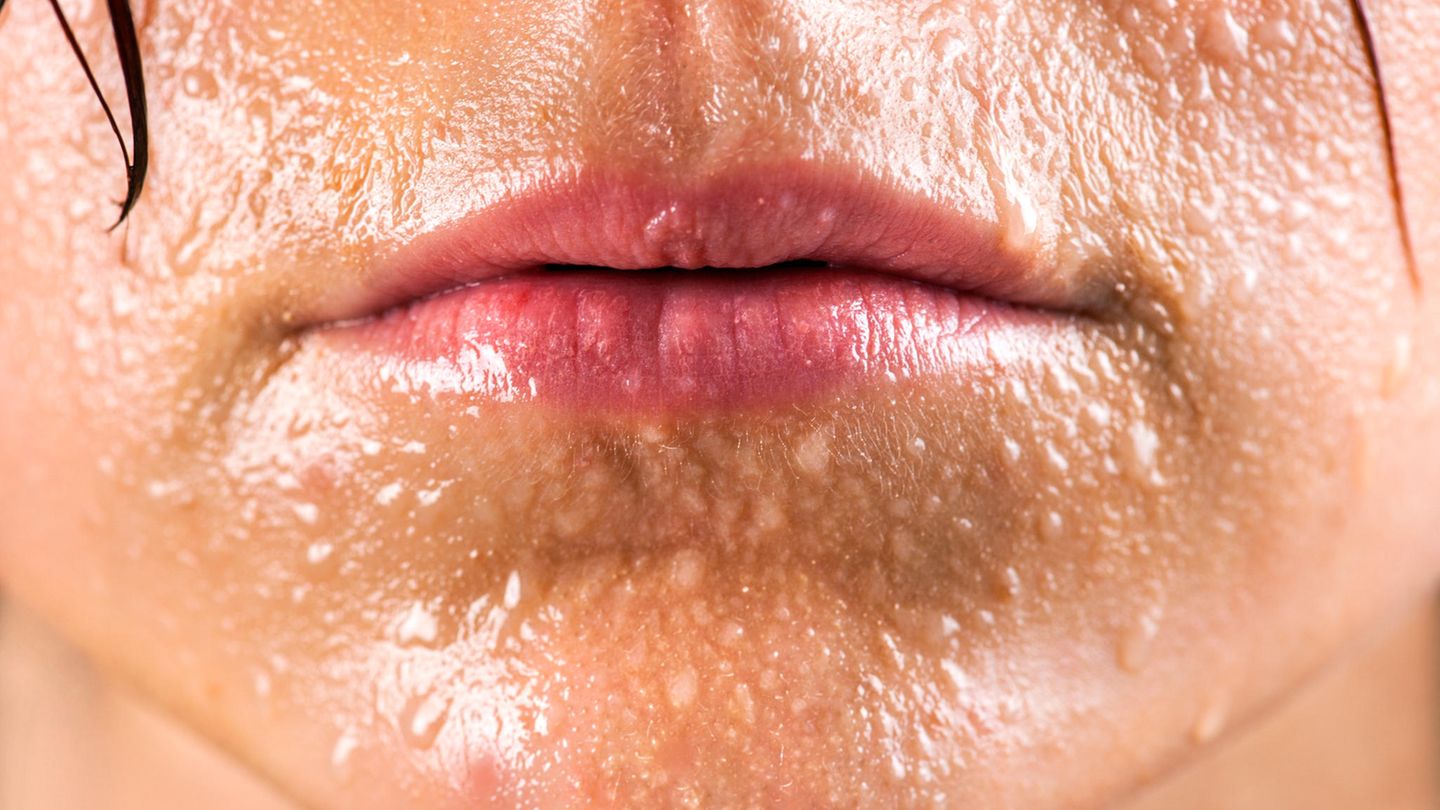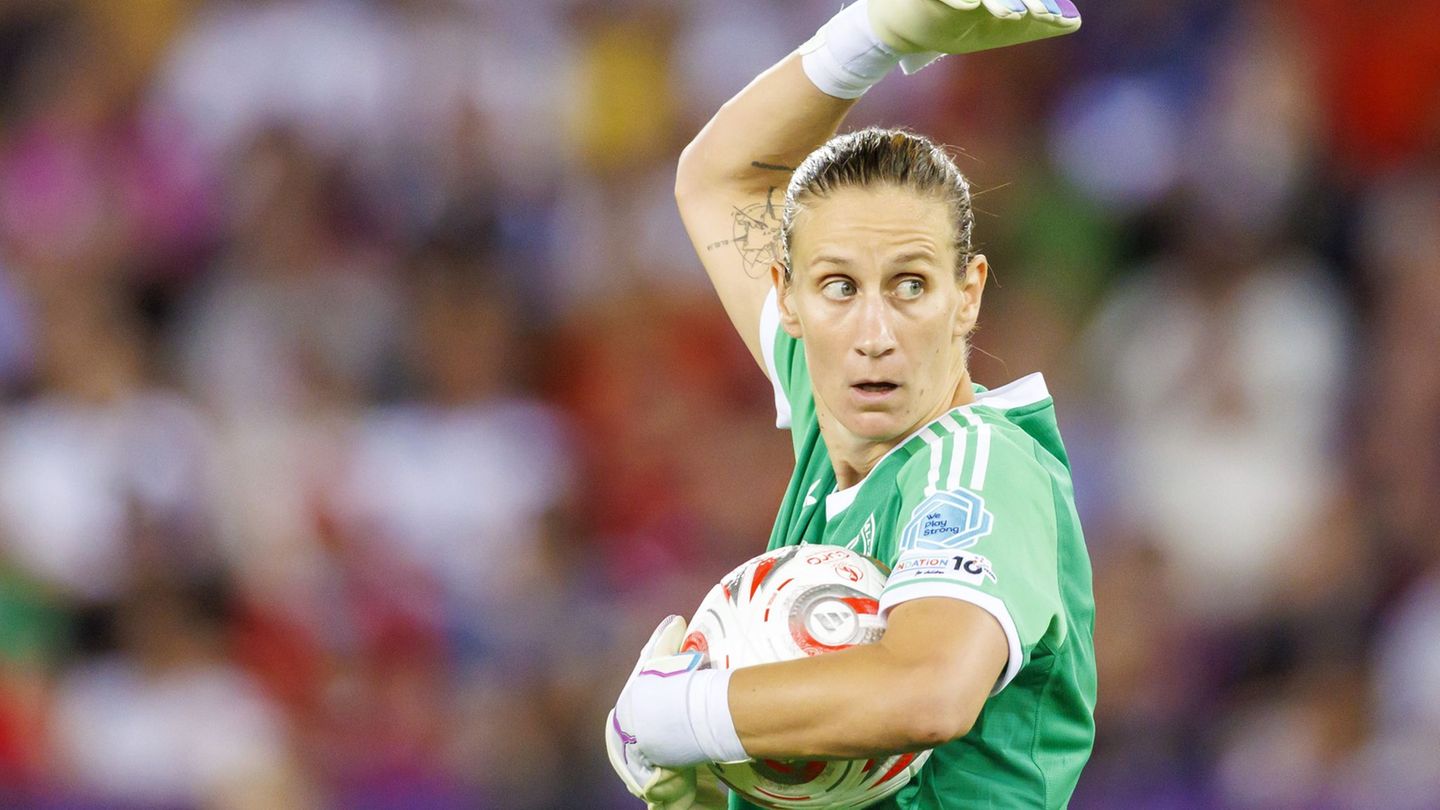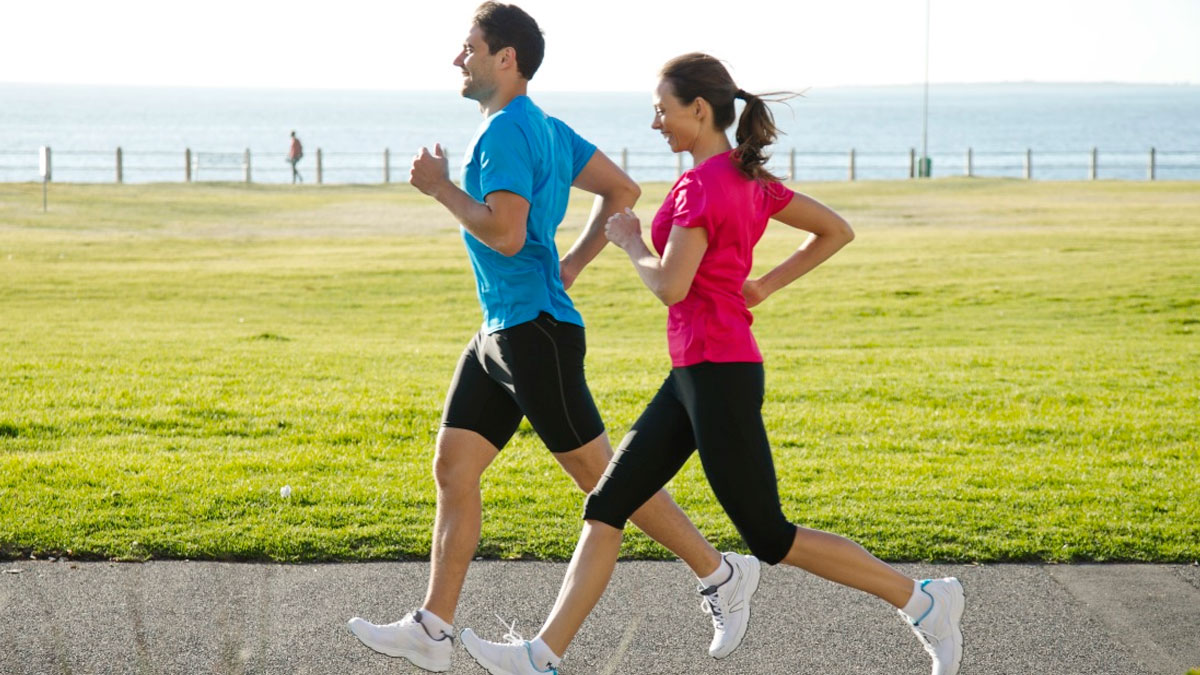Sweat under the armpits, hands so sweaty that shaking hands becomes torture, feet damp even though it’s cold outside. What’s behind hyperhidrosis and what you can do about it.
People sweat. Sometimes from exertion or heat, sometimes from excitement. It’s a normal thing, but it’s still unpleasant. You look when someone stands in front of you with sweat stains on their clothes or someone offers you a sweaty hand. “The heat” or “I had to run here” is used as an excuse. Fortunately, such situations are rare. Unfortunately, however, not for around a million people in this country. They sweat constantly. Regardless of the outside temperature, exertion and emotions, sweat runs uncontrollably, usually from their armpits, feet or hands. Every day. They suffer from hyperhidrosis.
There are two types of abnormal sweating. In primary hyperhidrosis, the exact cause cannot be determined. In secondary hyperhidrosis, the increased sweating is a side effect of an illness such as the flu or a hormonal change such as during menopause. The third form is bromhidrosis: in this case, the sweat smells unusually strong.
The boundary between sweating and hyperhidrosis
Deodorant, pads and nutrition
What really helps against sweat and perspiration
When normal sweating ends and hyperhidrosis begins is not a question of the amount of sweat. In extreme heat or when exerting oneself, any healthy person can lose several liters over the course of a day. Hyperhidrosis is more a question of timing. The guidelines of the medical associations state: “Sweating occurs independently of temperature, is unpredictable and cannot be controlled voluntarily.” In medicine, the condition is divided into three degrees of severity. In the most severe degree, the sweat spots reach a diameter of more than 20 centimeters and the “sweat drips off.” The language of medicine is not very descriptive here.
For those affected, it is primarily a social challenge. Hyperhidrosis makes it difficult to interact with other people, especially with partners. The constant production of sweat irritates the skin under the armpits and leads to redness, rashes and even the sensation of a foreign body. Some people drop cups from their sweaty hands or the touchscreen of their smartphone no longer responds to their wet fingers. On the feet, the constant sweat softens the calluses. Some have to buy shoes in larger sizes to fill the extra space with absorbent insoles or paper. Others keep plenty of spare clothes in the office. If the skin is constantly overly moist, this will lead to secondary diseases over time: bacterial diseases of the calluses, athlete’s foot, warts.
The causes? Still a mystery.
Unfortunately, people who are affected in this way are often ostracized and soon realize that home remedies are not enough to combat sweating. The symptoms are not caused by too many or too large glands, but by overactivity of the nerves that control them. The exact cause of primary hyperhidrosis, which is not attributed to organic, hormonal or psychological factors, has not yet been fully researched. Sometimes the disease is caused by medical reasons such as a malfunctioning thyroid or hormonal disorders, and sometimes by psychological causes such as nervousness or stress. Many university hospitals offer special consultations for those affected. The German Hyperhidrosis Center is based in Munich. There are only estimates of the number of people affected, ranging from one to five percent of the German population.
From ointments to nerve transection: the therapies are varied
Medical antiperspirants
Most antiperspirants contain aluminum salts in varying concentrations. The aluminum salt penetrates the pores, combines with keratin and closes or constricts the sweat glands. The higher the aluminum salt concentration, the deeper it penetrates into the skin. The solution can be used in the armpit area, on the palms of the hands and the soles of the feet. Medical antiperspirants with a high aluminum salt concentration are available over the counter in pharmacies, but can cause skin irritation and allergic reactions. They are only suitable for mild hyperhidrosis.
Treatment with Botox
Injecting the neurotoxin botulinum toxin with a syringe under the skin paralyses the muscles and thus the sweat glands. This technique is also suitable for hands and feet. Botox injections for underarm sweating are now covered by health insurance if there is an appropriate indication. Each treatment costs 500 to 1000 euros and must be repeated every six months.
Cream with glycopyrronium bromide, GPB
For a year now, at least for hyperhidrosis in the armpits, there has been a simple solution: a cream. The effect of the prescription drug Axhidrox from the German pharmaceutical company Dr. Wolff is based on glycopyrronium bromide, or GPB for short. The drug inhibits the transmission of signals between nerves and sweat glands. GPB is one of the anticholinergics widely used in medicine, which were previously prescribed as tablets to combat uncontrolled sweating. The side effects of the tablets can be severe: dry mouth, tiredness, visual disturbances and even nausea. Packaged in an ointment, the drug only works where it is supposed to. According to research studies, the cream is said to work quickly and the side effects are only “mild to moderate”. Dry mouth occurs much less frequently than with tablets.
Current therapy / iontophoresis
Another method, presumably free of side effects, is so-called iontophoresis. In this electrical stimulation therapy, hands or feet are held in a water bath or a type of sponge is clamped under the arms. A weak electrical current is passed through the water, but the mechanism of action is unknown. It is suspected that the threshold at which sweating is triggered is increased by the electrical stimulation. The dermatologist can prescribe this device for self-treatment at home. However, the therapy is laborious because it has to be carried out daily. The therapy also dries out the affected skin areas.
Suction of sweat glands
This method is suitable for people who sweat particularly heavily under their armpits. Only local anesthesia is used. First, fluid is pumped into the affected area. The doctor loosens the tissue with a metal rod. Then the tissue in question is suctioned out, including the sweat glands. Around 80 percent of the glands are removed. Light sweating is still possible, but this can be easily treated with deodorant. Sweating stops immediately after the operation. And it stays that way, because sweat glands cannot regenerate. This means that you don’t sweat more in other areas either. This type of sweat gland removal is only practiced in a few clinics and is generally not covered by health insurance companies.
Surgical removal of sweat glands
The surgical removal of sweat glands is an outdated method, but is usually covered by health insurance. The sweat gland area under the armpits is completely removed. A 10 to 20 centimeter long scar remains, which can often lead to tight skin and pain in the shoulder area. Although around 90 percent of the sweat glands are removed, the procedure is larger and the scar is often a hindrance afterwards.
Effective but not without risk: sympathectomy
During a sympathectomy, part of the sympathetic nerve is removed to the right and left of the spine using an endoscopic procedure. The sympathetic nervous system is part of the autonomic nervous system. Small nerve branches extend from it to under the skin. They control sweat production. To stop sweating in the hand, half a centimeter is removed between the third and fourth ribs. The nerve branches that lead from here to the hands are thus paralyzed. To stop sweating in the forehead, the nerve between the first and second ribs is severed. A side effect of this operation is limited compensatory sweating: sweat production shifts from the hand or forehead to the back or stomach. However, this is usually much less disturbing for those affected.
However, severing the sympathetic nerve carries numerous physical and sometimes serious psychological risks. It should be the very last measure if all other therapies fail.
Source: Stern
I’m Caroline, a journalist and author for 24 Hours Worlds. I specialize in health-related news and stories, bringing real-world impact to readers across the globe. With my experience in journalism and writing in both print and online formats, I strive to provide reliable information that resonates with audiences from all walks of life.




